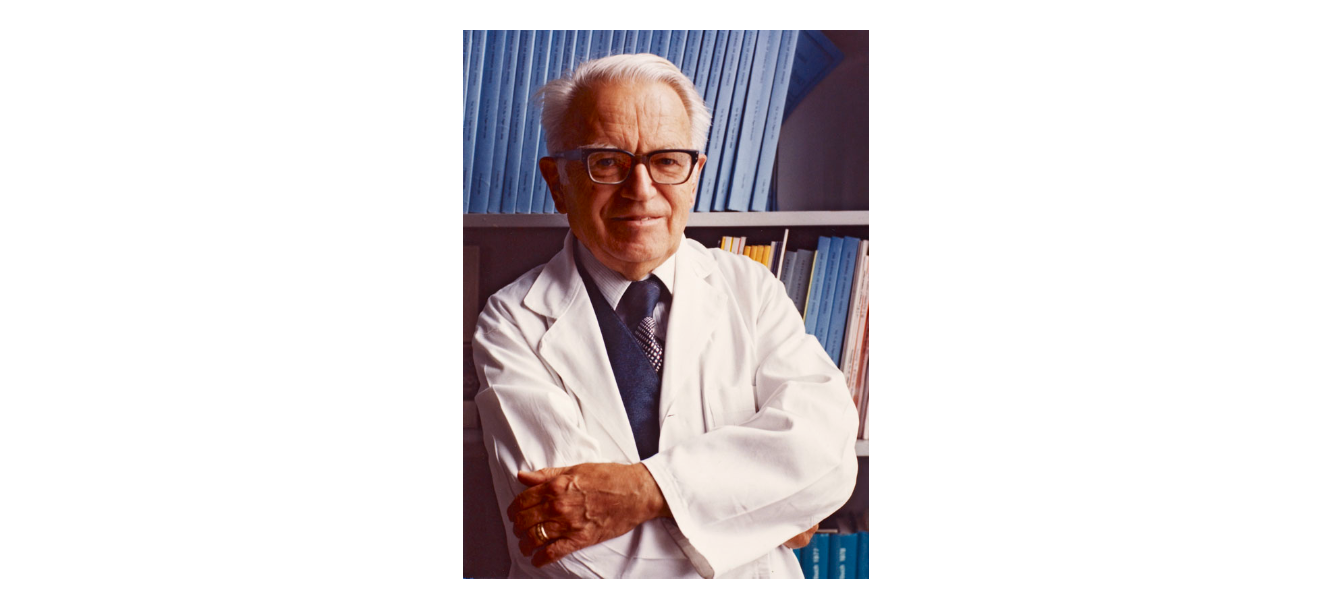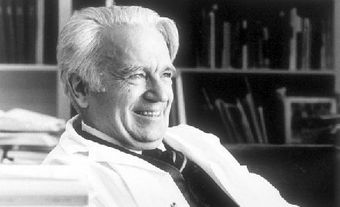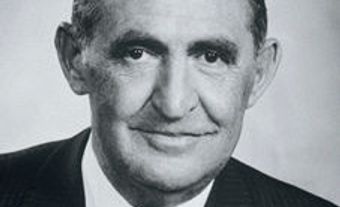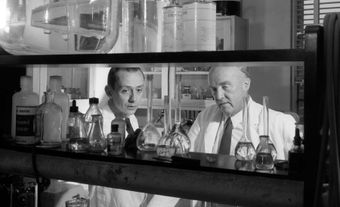Gerhard Herzberg, PC, CC, FRSC, physicist (born 25 December 1904 in Hamburg, Germany; died 3 March 1999 in Ottawa, ON). Herzberg is recognized for his contributions towards the study of molecular spectroscopy. In 1971, he was awarded the Nobel Prize in Chemistry for his research on the structure of molecules, specifically free radicals (see Nobel Prizes and Canada).

Career
In 1930, Gerhard Herzberg began an academic career at Darmstadt Technical University where he also earned his doctorate in engineering physics (see Physics). With his wife Luise, who was of Jewish descent, Herzberg left Nazi Germany in 1935. (See also Second World War.) He taught at the University of Saskatchewan (1935-45), coming to Canada on the initiative of John William Tranter Spinks, who had worked at Herzberg’s Darmstadt laboratory (1933-34). Herzberg went to the Yerkes Observatory, Chicago, in 1945, seeking better opportunities for research, and returned to Canada in 1948 to join the staff of the National Research Council (NRC). As director of physics (1949-69), Herzberg and NRC president Edgar William Richard Steacie laid the foundations of the NRC's postwar reputation as a scientific "centre of excellence."
Research and Nobel Prize
Herzberg's own research field was molecular spectroscopy, the analysis of the spectra of molecules in order to determine their structure (see Spectroscopy). He specialized in free radicals, important intermediates of chemical reactions that have very short lifetimes (microseconds) under laboratory conditions. Free radicals are also found in interstellar space, where they can last for long periods, and their spectra can thus be recorded by special instruments. Herzberg and his associates developed new methods for their spectroscopic analysis.
In 1971, Herzberg was awarded the Nobel Prize in Chemistry “for his contributions to the knowledge of electronic structure and geometry of molecules, particularly free radicals.” (See also Nobel Prizes and Canada.)
Legacy
Gerhard Herzberg’s career included more than 200 scientific publications. He was also a vigorous participant in the science policy debate following the Lamontagne report of 1970 (see Science Policy). The NRC created its highest grade, Distinguished Research Scientist, especially to allow Herzberg to continue personal research after he reached retirement age in 1969. Herzberg officially retired from the NRC in December 1994.
In 1975 the NRC's astronomy and spectroscopy units were reorganized as the Herzberg Institute of Astrophysics, and in September 1987 Asteroid 3316, discovered February 1984, was named after him. In recognition of Herzberg, the Gerhard Herzberg Canada Gold Medal for Science and Engineering was established by the Natural Sciences and Engineering Research Council of Canada. Similarly, the Herzberg Medal, awarded by the Canadian Association of Physicists, bears his name.
Select Honours and Awards
- Fellow, Royal Society of Canada (1939)
- Fellow, Royal Society (1951)
- Companion, Order of Canada (1968)
- Nobel Prize in Chemistry, Royal Swedish Academy of Sciences (1971)
- Member of the Queen’s Privy Council for Canada (1992)
- Inductee, Canadian Science and Engineering Hall of Fame (1992)

 Share on Facebook
Share on Facebook Share on X
Share on X Share by Email
Share by Email Share on Google Classroom
Share on Google Classroom








